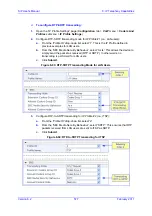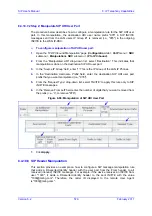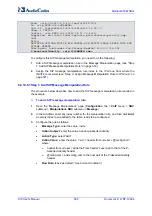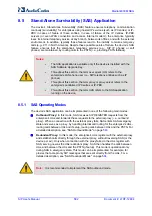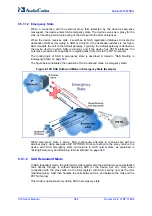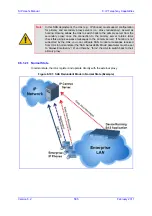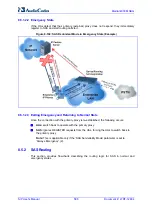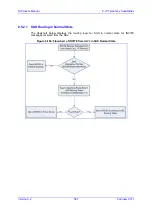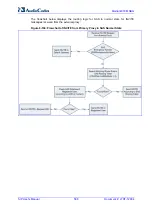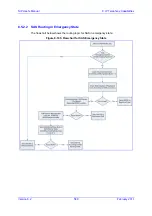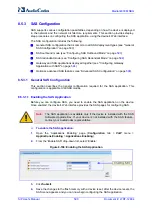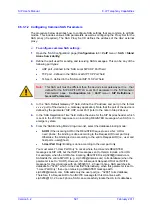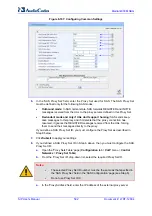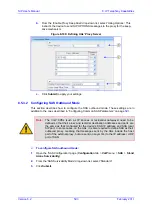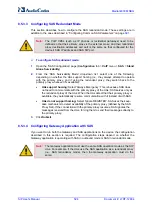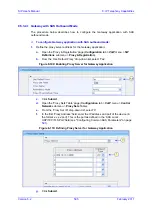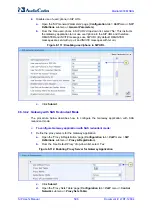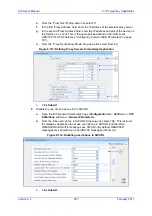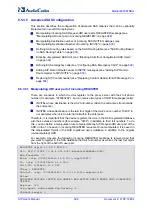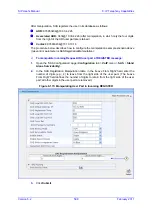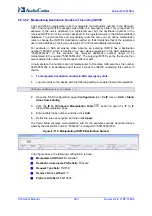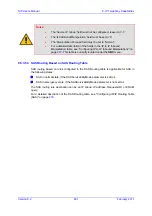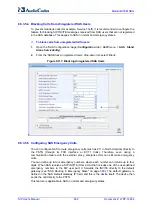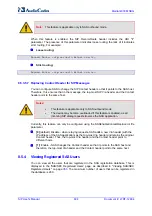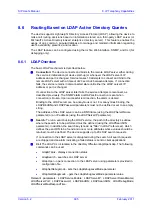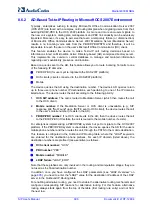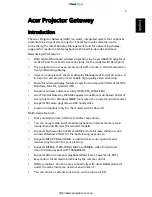
Version 6.2
591
February 2011
SIP User's Manual
8. IP Telephony Capabilities
8.5.3.1.2 Configuring Common SAS Parameters
The procedure below describes how to configure SAS settings that are common to all SAS
modes. This includes various SAS parameters as well as configuring the Proxy Set for the
SAS proxy (if required). The SAS Proxy Set ID defines the address of the UAs' external
proxy.
¾
To configure common SAS settings:
1.
Open the 'SAS Configuration' page (
Configuration
tab >
VoIP
menu >
SAS
>
Stand
Alone Survivability
).
2.
Define the port used for sending and receiving SAS messages. This can be any of the
following port types:
•
UDP port - defined in the 'SAS Local SIP UDP Port' field
•
TCP port - defined in the 'SAS Local SIP TCP Port' field
•
TLS port - defined in the 'SAS Local SIP TLS Port' field
Note:
This SAS port must be different than the device's local gateway port (i.e., that
defined for the 'SIP UDP/TCP/TLS Local Port' parameter in the 'SIP General
Parameters' page -
Configuration
tab >
VoIP
menu >
SIP Definitions
>
General Parameters
).
3.
In the ‘SAS Default Gateway IP‘ field, define the IP address and port (in the format
x.x.x.x:port)
of the device (i.e., Gateway application). Note that the port of the device is
defined by the parameter ‘SIP UDP Local Port’ (refer to the note in Step 2 above).
4.
In the 'SAS Registration Time' field, define the value for the SIP Expires header, which
is sent in the 200 OK response to an incoming REGISTER message when SAS is in
emergency state.
5.
From the 'SAS Binding Mode' drop-down list, select the database binding mode:
•
0-URI:
If the incoming AOR in the REGISTER request uses a ‘tel:’ URI or
‘user=phone’, the binding is done according to the Request-URI user part only.
Otherwise, the binding is done according to the entire Request-URI (i.e., user and
host parts - user@host).
•
1-User Part Only:
Binding is done according to the user part only.
You must select '1-User Part Only' in cases where the UA sends REGISTER
messages as SIP URI, but the INVITE messages sent to this UA include a Tel URI.
For example, when the AOR of an incoming REGISTER is sip:3200@domain.com,
SAS adds the entire SIP URI (e.g., sip:3200@domain.com) to its database (when the
parameter is set to '0-URI'). However, if a subsequent Request-URI of an INVITE
message for this UA arrives with sip:3200@10.1.2.3 user=phone, SAS searches its
database for "3200", which it does not find. Alternatively, when this parameter is set to
'1-User Part Only', then upon receiving a REGISTER message with
sip:3200@domain.com, SAS adds only the user part (i.e., "3200") to its database.
Therefore, if a Request-URI of an INVITE message for this UA arrives with
sip:3200@10.1.2.3 user=phone, SAS can successfully locate the UA in its database.
Summary of Contents for Mediant 800 MSBG
Page 2: ......
Page 366: ...SIP User s Manual 366 Document LTRT 12804 Mediant 800 MSBG Reader s Notes ...
Page 372: ...SIP User s Manual 372 Document LTRT 12804 Mediant 800 MSBG Reader s Notes ...
Page 390: ...SIP User s Manual 390 Document LTRT 12804 Mediant 800 MSBG Reader s Notes ...
Page 404: ...SIP User s Manual 404 Document LTRT 12804 Mediant 800 MSBG Reader s Notes ...
Page 616: ...SIP User s Manual 616 Document LTRT 12804 Mediant 800 MSBG Reader s Notes ...
Page 636: ...SIP User s Manual 636 Document LTRT 12804 Mediant 800 MSBG Reader s Notes ...
Page 652: ...SIP User s Manual 652 Document LTRT 12804 Mediant 800 MSBG Reader s Notes ...
Page 886: ...SIP User s Manual 886 Document LTRT 12804 Mediant 800 MSBG Reader s Notes ...

